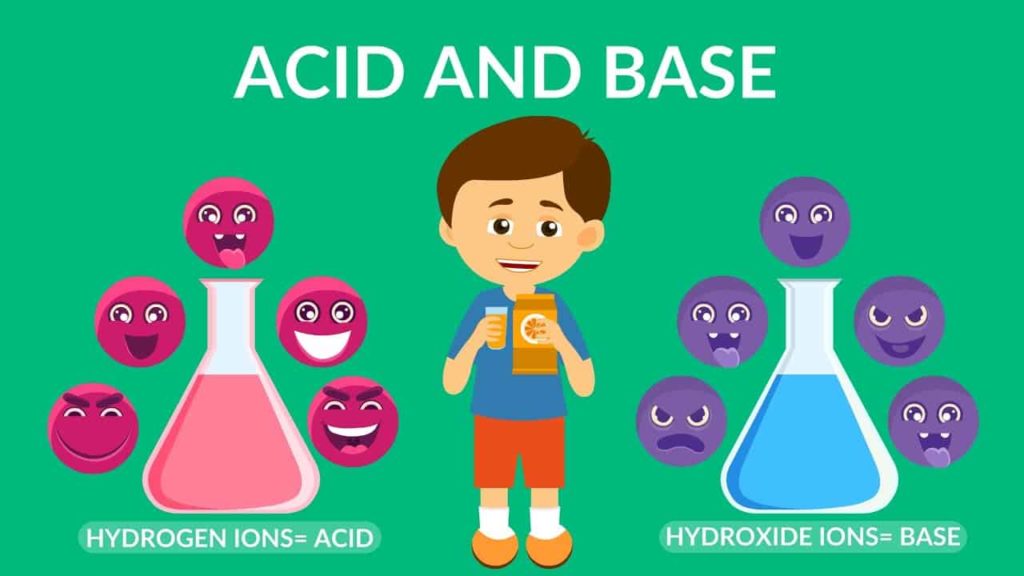Acid and base are chemical substances that play an important role in chemistry and are commonly found in our everyday lives.
An acid is a hydrogen-containing substance that can transmit a proton (hydrogen ion) to another component, whereas a base is a molecule or ion that can take a hydrogen ion from an acid.
Here are some of the main differences between acid and base to help you understand how both differ:
Acid Vs Base:
Acid:
Acidic substances are characterized by their taste and texture.
A compound that may provide an H+ ion and simultaneously stay favourable after losing that ion is referred to as an acid.
When exposed to acids, blue litmus is said to turn red.
Strong acids and weak acids are split into two categories based on ion disintegration in water.
Base:
Base substances have a pungent taste and a slippery feel than acid.
A base that can dissolve in water is referred to as “alkali.”
When these substances react with acids, salts are generated.
Bases are frequently turned red litmus blue.
Strong bases, weak bases, neutral bases, super bases, and solid bases are among the several types of bases.

What is the difference between Acid and Base?
Substances that transfer a hydrogen ion (H+) to another chemical are known as acids whereas a substance that produces a hydroxide ion (OH-), when dissolved in water is referred to as a base.
So, what’s the difference? Let’s discuss the difference between acid and base:
| Acid | Base |
| When dissolved in water, any chemical substance that generates a solution with stronger hydrogen ion activity than the water sample is known as an acid. | An aqueous material that absorbs hydrogen ions is known as a base. |
| It is determined by the amount of hydronium ion present. | It is determined by the amount of hydroxide ions present. |
| It is dependent on the hydroxide ion content. less than 7.0. | pH is greater than 7.0, with the potential to reach 14 in the case of strong bases. |
| Acids can be solid, liquid, or gaseous depending on the temperature. Acid has a sour taste as compared to the base. | Bases appear oily due to the reaction of the base with the lipids in your hand, except for ammonia, which is a gas. The base has a bitter taste as compared to acid. |
| Litmus paper turns from blue to crimson when exposed to acid. | It changes the red litmus paper to blue. |
| Acids are compounding whose chemical formula starts with the letter H, such as HCl (Hydrochloric acid). | Bases are substances with a chemical formula that finishes in OH, such as KOH (Potassium hydroxide). |
| Indicator of Phenolphthalein: It doesn’t change colour. | Indicator of Phenolphthalein: Base changes to pink colour than acid. |
| It is used in processed foods, fertilizers, textile processing, domestic cleaning, and other uses. | It is used in antacids, cleansers, detergents, and solvents, among other things. |
| Since electrolytes conduct electricity, they react with a wide range of metals. | Electrolytes are substances that conduct electric current and range in soluble from insoluble to soluble enough to react with water vapour. |
| Ex: Acetic acid and sulphuric acid. | Ex: Sodium Hydroxide and Ammonia. |
Conclusion:
After reading this article you learned a lot about the differences between acid and base. They are no longer able to confuse you.
As a result, acids and bases are significant substances that can be distinguished by their chemical composition.
The acids and bases are employed in a wide range of applications, they are the backbone of chemistry.
• Section Under Diff